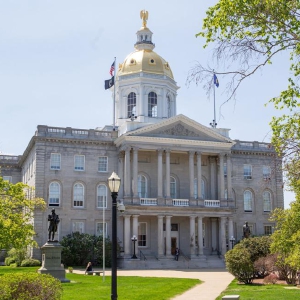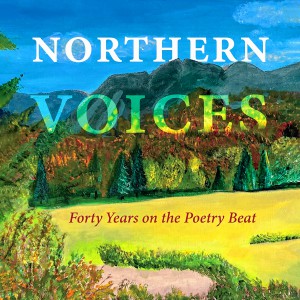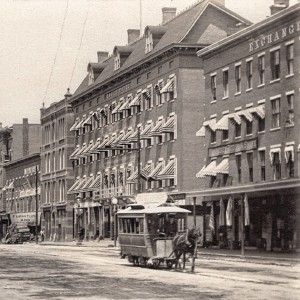For honeysuckle, plant the right one in the right spot
| Published: 05-28-2018 11:31 AM |
Who couldn’t love a plant with a name that speaks of both sweetness and nurturing? Yet there are those who scorn honeysuckle. And – just as bad – there are those who shower honeysuckles with too much affection.
The key to experiencing honeysuckle’s sweet side is having the right plant in the right place. The name “honeysuckle” can refer to any of the almost 200 species in Lonicera, the honeysuckle genus, not to mention all the varieties within each species. They vary considerably in appearance, growth habit and, shall we say, exuberance.
Hall’s honeysuckle, deciduous in northern regions and increasingly evergreen as you travel south, is a vine that bears extremely fragrant, yellowish flowers pretty much all summer long. Although it was welcomed enthusiastically when it arrived here from Asia in 1806, it subsequently spread with equal enthusiasm, leading some gardeners to curse it. Especially where winter cold does not keep growth in check, this plant swallows up banks, rocks, trees and shrubs. If you plant Hall’s honeysuckle, keep a watchful eye on it.
Amur honeysuckle, which releases a sweet aroma each spring from yellowish or pinkish blossoms, is another invader that draws critics. This robust shrub will grow as much as 10 feet high and wide, and as its stems arch to the ground, they can take root to create whole new shrubs, which do the same. The shiny, red berries, paired along the stems later in summer, capture our attention because they look so tasty. Birds like eating them and contribute to this honeysuckle’s spread, mostly to abandoned fields and the edges of woods, where it often does battle with the multiflora rose, another invasive shrub.
Not all honeysuckles threaten to take over the world. And these more timid species still abound in qualities. Take, for example, winter honeysuckle, a plant most appreciated in late winter or early spring. Its flowers, though not particularly showy, emit a powerful, lemony fragrance over a long period of time.
One of my favorite honeysuckles – one of my favorite plants, in fact – is trumpet honeysuckle. The flowers, unfortunately, have no fragrance, but they make up for that in ostentatious beauty with their clusters of long, red trumpets joined at their bases.
Another favorite of mine is woodbine honeysuckle. Its flowers are more subdued, in pastel purple, pink, and yellow, but they flare wide open and, according to some people (not me), have a fragrance.
Both trumpet and woodbine honeysuckle are twining vines that burst into bloom in early summer, then continue the show at a more restrained pace for almost the rest of the season. To me, every bare telephone pole cries out for this vine. I’ve clothed two.
Article continues after...
Yesterday's Most Read Articles
 N.H. Educators voice overwhelming concerns over State Board of Education’s proposals on minimum standards for public schools
N.H. Educators voice overwhelming concerns over State Board of Education’s proposals on minimum standards for public schools
 “It’s beautiful” – Eight people experiencing homelessness to move into Pleasant Street apartments
“It’s beautiful” – Eight people experiencing homelessness to move into Pleasant Street apartments
 Voice of the Pride: Merrimack Valley sophomore Nick Gelinas never misses a game
Voice of the Pride: Merrimack Valley sophomore Nick Gelinas never misses a game
 Matt Fisk will serve as next principal of Bow High School
Matt Fisk will serve as next principal of Bow High School
 Former Concord firefighter sues city, claiming years of homophobic sexual harassment, retaliation
Former Concord firefighter sues city, claiming years of homophobic sexual harassment, retaliation
 A trans teacher asked students about pronouns. Then the education commissioner found out.
A trans teacher asked students about pronouns. Then the education commissioner found out.
One honeysuckle that gets high marks all around is Sakhalin honeysuckle. It’s a reasonably sized, rounded shrub with large, red flowers that are followed by red berries. An especially nice feature of this honeysuckle is the golden yellow fall color of its leaves. Despite all the other honeysuckles in the landscape – and some are frighteningly exuberant – let’s make an opening for this relative newcomer, introduced in 1917.
Two more honeysuckles, honeyberry honeysuckle and bearberry honeysuckle, are worth mentioning because of their blue, edible fruits that ripen very early in the season, even before strawberries. These berries have long been harvested in China, Russia and Japan, and the plants have recently been introduced here.
I haven’t found the berries to be particularly tasty. Then again, this is a new fruit, at the same point in development now as the apple may have been 2,000 years ago, so I’m willing to wait and see. I’ll assume that the nectar – which gives honeysuckles their name – is at least as sweet as that of other honeysuckles.


 Community Players of Concord present newest adaptation of Pride and Prejudice
Community Players of Concord present newest adaptation of Pride and Prejudice Concord Monitor editor Mike Pride’s final book explores the lives, works of Northern New England poets
Concord Monitor editor Mike Pride’s final book explores the lives, works of Northern New England poets Active Aging: John Burke of Peterborough celebrated his 81st birthday with 81 hikes up Pack Monadnock
Active Aging: John Burke of Peterborough celebrated his 81st birthday with 81 hikes up Pack Monadnock Vintage Views: From darkness to light
Vintage Views: From darkness to light
